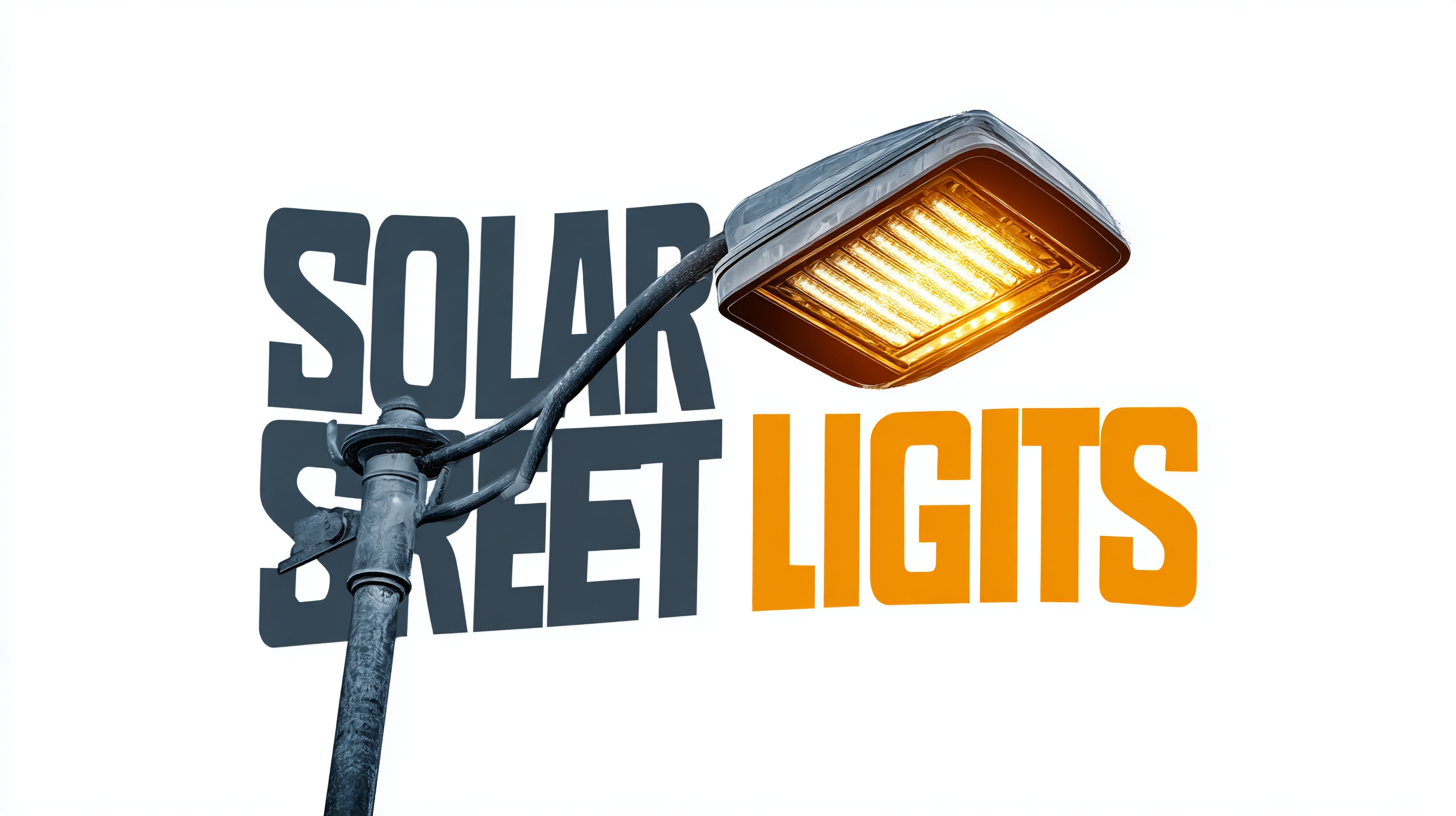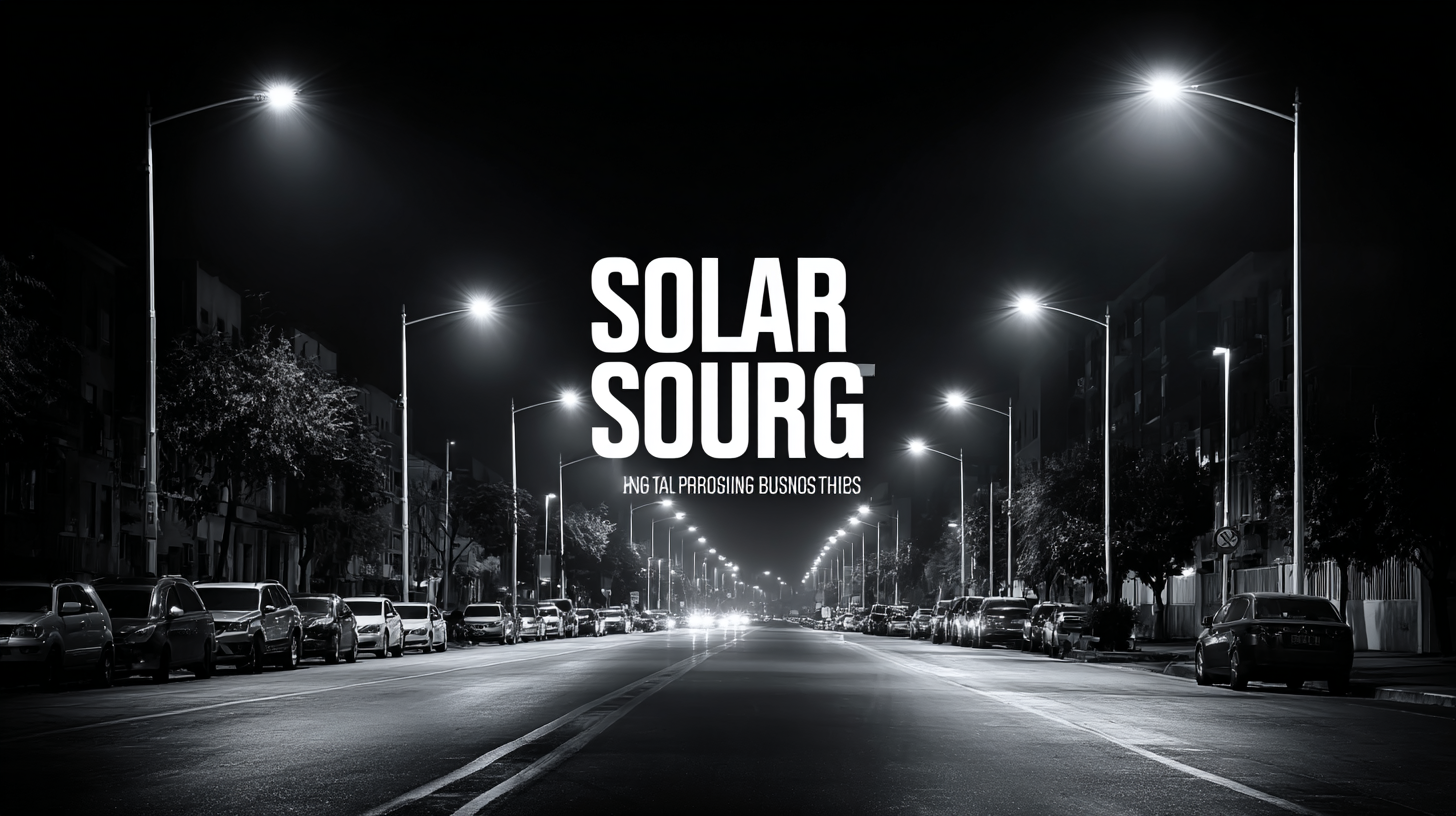Top Strategies for Sourcing the Best Solar Street Lights for Your Business
As urban areas continue to expand and the demand for sustainable energy solutions rises, the importance of Solar Street Lights has become more pronounced. According to a recent report by the International Renewable Energy Agency (IRENA), the global solar lighting market is expected to reach $9.5 billion by 2025, propelled by the increasing adoption of renewable energy sources and advancements in solar technology. Innovative manufacturing practices in leading Chinese factories are transforming the production landscape, making it possible for businesses to source high-quality solar street lighting solutions that are both cost-effective and efficient. This blog will explore top strategies for sourcing the best solar street lights for your business, ensuring that you leverage the expertise of world-class manufacturers for optimal results.

Types of Solar Street Lights: Understanding Different Features and Applications
When considering solar street lights for your business, understanding the different types and their features is crucial for making an informed decision. There are several categories of solar street lights, including those equipped with motion sensors, adjustable brightness settings, and integrated smart technology. Motion sensor lights, for example, enhance security and energy efficiency by illuminating only when movement is detected. Adjustable brightness allows you to customize the luminosity based on specific needs, while smart technology can integrate with existing infrastructure for controlled operations.
When selecting solar street lights, prioritize features that align with your operational goals. For instance, if the area experiences heavy foot traffic at night, lights with higher lumens and a wider beam angle will provide better visibility. Additionally, consider the material and durability of the lights; those built with corrosion-resistant materials are ideal for locations with harsh weather conditions.
Another tip is to evaluate the battery life and solar panel efficiency. Longer battery life ensures lights remain operational through extended cloudy periods, while high-efficiency solar panels will maximize energy absorption, reducing the need for frequent replacements. Engaging with vendors who provide comprehensive specifications can further aid in selecting the optimal solar street lights for your business.
Comparison of Different Types of Solar Street Lights
This chart compares the brightness in lumens for different types of solar street lights commonly used in various applications. Understanding these differences can help businesses choose the right solar street lights that meet their operational needs.
Key Considerations for Selecting the Right Solar Street Lights for Various Environments
When selecting solar street lights for various environments, understanding the unique requirements of each location is crucial. According to a report by the Solar Energy Industries Association (SEIA), solar street lighting can reduce energy costs by up to 80% while providing stable lighting for public spaces. However, factors such as geographic location, climate conditions, and intended use must be taken into account. For example, areas with prolonged periods of cloudy weather may require lights with larger battery capacities or the ability to connect to the grid for supplementary power.
Moreover, the design and durability of solar street lights are also critical considerations. The International Dark-Sky Association suggests that fixtures should minimize light pollution and be environmentally friendly, promoting both safety and sustainability. Selecting corrosion-resistant materials and robust solar panels designed for various weather conditions ensures longevity and efficiency. As highlighted in a 2021 market analysis by MarketsandMarkets, the global solar street lighting market is projected to grow significantly, demanding high-quality, adaptable products that can meet the diverse needs of urban and rural environments alike.
Top Strategies for Sourcing the Best Solar Street Lights for Your Business
| Criteria | Description | Advantages | Best Environment |
|---|---|---|---|
| Lumens Output | The brightness of the light, measured in lumens. | Provides effective illumination for safety and visibility. | Urban areas, parking lots |
| Solar Panel Efficiency | The efficiency rate at which solar panels convert sunlight into electricity. | Reduces reliance on battery power; better performance in cloudy weather. | Moderate to low sunlight areas |
| Battery Type and Capacity | Type of battery used to store energy for nighttime use. | Longer lifespan and better performance. | Rural areas, parks |
| Durability and Weather Resistance | The ability to withstand harsh weather conditions. | Long-term reliability; reduced maintenance costs. | Coastal areas, places with severe weather |
| Installation and Maintenance | Ease of installation and ongoing maintenance requirements. | Lower total cost of ownership; faster deployment. | All environments |
Comparative Analysis: Solar vs. Traditional Street Lighting in Urban Areas
When evaluating street lighting options for urban areas, a comparative analysis between solar and traditional street lighting reveals significant differences in performance, cost, and environmental impact. Traditional street lights rely heavily on grid electricity, resulting in higher ongoing energy costs and a larger carbon footprint. In contrast, solar street lights harness renewable energy from the sun, producing no emissions during operation. This not only helps cities reduce their overall energy bills but also aligns with sustainability goals, making solar solutions more appealing in today’s eco-conscious landscape.

Additionally, the maintenance considerations differ widely between the two types. Traditional lighting systems often require extensive upkeep, including bulb replacements and frequent repairs due to wear and tear. In contrast, solar street lights typically feature longer-lasting LED bulbs and self-sufficient solar panels, which can significantly reduce maintenance efforts and costs over time.
The installation of solar street lights is often simpler and quicker since they don't require complex electrical setups, allowing for faster deployment in urban environments. As cities increasingly prioritize sustainability and efficiency, solar street lights emerge as a compelling alternative to traditional systems.
Top Manufacturers of Solar Street Lights: Industry Insights and Performance Metrics
When sourcing the best solar street lights for your business, understanding the top manufacturers in the industry is crucial. According to the latest report by the International Renewable Energy Agency (IRENA), the solar street light market has grown significantly, with an estimated annual growth rate of 15% over the next five years. This surge is attributed to the increasing demand for sustainable urban infrastructure and energy-efficient solutions. Notable manufacturers like Signify and Greenshine offer advanced solar technologies that not only enhance performance but also provide smart city solutions through connected lighting systems.

Performance metrics are essential when evaluating solar street light vendors. A recent study published by Navigant Research highlights that lights equipped with LED technology can reduce energy consumption by up to 80% compared to conventional street lighting. Furthermore, solar street lights with integrated motion sensors have been shown to increase operational efficiency by extending the lifespan of the batteries, thus reducing maintenance costs by approximately 30%. As businesses look to invest in reliable solar solutions, focusing on these performance metrics and manufacturer innovations will ensure a solid return on investment while contributing to a greener environment.
Cost-Benefit Analysis: Evaluating Solar Street Lights for Long-Term Business Sustainability
When considering the implementation of solar street lights for your business, conducting a thorough cost-benefit analysis is essential for long-term sustainability. Initially, businesses may perceive the upfront costs of solar technology as a disadvantage; however, factoring in long-term savings can significantly alter this perspective. Solar street lights typically have lower operational and maintenance costs compared to traditional lighting solutions. By eliminating electricity bills and reducing dependency on the grid, businesses can see substantial savings over time, making solar installations a wise economic choice.
In addition to direct financial benefits, there is an increasing emphasis on sustainability in today’s market. Businesses that adopt eco-friendly solutions like solar street lights can enhance their corporate image and attract environmentally conscious consumers. This shift not only helps in compliance with regulatory measures aimed at reducing carbon footprints but also positions the company favorably in the competitive landscape. The initial investment can lead to strong returns in terms of brand loyalty, customer satisfaction, and potential tax incentives related to renewable energy use. Hence, a well-rounded evaluation that prioritizes both cost savings and environmental impact will ensure that solar street lighting is a sustainable choice for any forward-thinking business.
